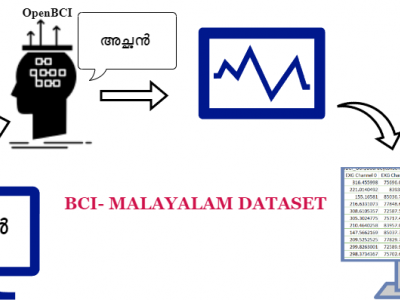Machine Learning

This zebrafish motion dataset contains
- Categories:
 208 Views
208 ViewsData were obtained from the established Clinical Data Repository (CDR) of Yichang Central People's Hospital, and the master index dataset of AKI sample cases was derived by combining the inclusion-exclusion conditions of the study samples with a query of the relevant conditions in the CDR. The data from the CDR and the AKI contain protected health information and are not subject to public sharing. Currently, 500 pieces of data were randomly selected as a sample for public disclosure, details of which are attached to the paper.
- Categories:
 241 Views
241 ViewsSecuring systems with limited resources is crucial for deployment and should not be compromised for other performance metrics like area and throughput. Physically Unclonable Functions (PUFs) emerge as a cost-effective solution for various security applications, such as preventing IC counterfeiting and enabling lightweight authentication. In the realm of memory-based PUFs, the physical variations of available memory systems, such as DRAM or SRAM, are exploited to derive an intrinsic response based on the accessed data row.
- Categories:
 233 Views
233 ViewsThis malware dataset collected from Indonesia. The Malicious Windows Portable Executable has been extracted using LIEF library. The main objective of this dataset is to support research in the field of malware detection by employing machine learning methodologies. The gathered data will aid in the creation of more effective and precise machine-learning algorithms for detecting and reducing malware risks in Windows-operated systems.
- Categories:
 1848 Views
1848 ViewsObjective, sensitive, and meaningful disease assessments are critical to support clinical trials and clinical care. Speech changes are one of the earliest and most evident manifestations of cerebellar ataxias. This data set contains features that can be used to train models to identify and quantify clinical signs of ataxic speech. Though raw audio or spectrograms cannot be released due to privacy concerns, this data set contains several OpenSMILE feature sets.
- Categories:
 239 Views
239 ViewsIn today’s context, it is essential to develop technologies to help older patients with neurocognitive disorders communicate better with their caregivers. Research in Brain Computer Interface, especially in thought-to-text translation has been carried out in several languages like Chinese, Japanese and others. However, research of this nature has been hindered in India due to scarcity of datasets in vernacular languages, including Malayalam. Malayalam is a South Indian language, spoken primarily in the state of Kerala by bout 34 million people.
- Categories:
 851 Views
851 Views
The Deepfake face detection task involves a facial image of unknown authenticity for testing. While most deepfake detection methods take only the image as input, our literature demonstrates that conditioning the deepfake detector on identity—i.e., knowing whose deepfake face the picture might be—can enhance detection performance. Existing deepfake detection datasets, such as FaceForensics++ and DFDC, do not include identity information for authentic and deepfake faces.
- Categories:
 2549 Views
2549 ViewsThe dataset utilized in this research originates from two primary sources: the Central Bureau of Statistics of Indonesia, which provides data on Harvested Area and Production, and the Meteorology, Climatology, and Geophysics Agency of Indonesia, responsible for data on Rainfall, Humidity, and Temperature. This dataset encompasses six years of observations, collected annually from 2018 to 2023. It is important to note that the data for December 2023 are predictive estimates from these agencies.
- Categories:
 333 Views
333 ViewsThis is the dataset used in the paper "Application of improved lightweight network and Choquet fuzzy ensemble technology for soybean disease identification". This data set contains 6 types of soybean disease leaves collected from Xiangyang Farm, Nengjiang Farm and Jiusan Farm of Northeast Agricultural University in Heilongjiang Province from early June to late September 2019. All images are collected in natural scenes. A total of 1620 disease images of soybean leaves were collected.
- Categories:
 195 Views
195 ViewsThis is the dataset used in the paper "Application of improved lightweight network and Choquet fuzzy ensemble technology for soybean disease identification". This data set contains 6 types of soybean disease leaves collected from Xiangyang Farm, Nengjiang Farm and Jiusan Farm of Northeast Agricultural University in Heilongjiang Province from early June to late September 2019. All images are collected in natural scenes. A total of 1620 disease images of soybean leaves were collected.
- Categories:
 40 Views
40 Views






